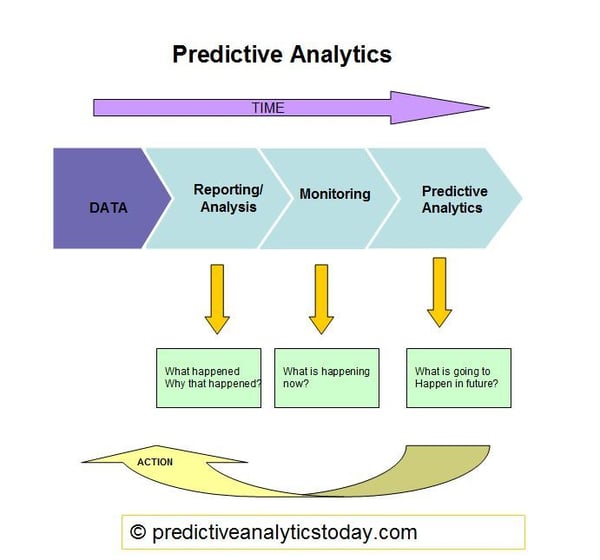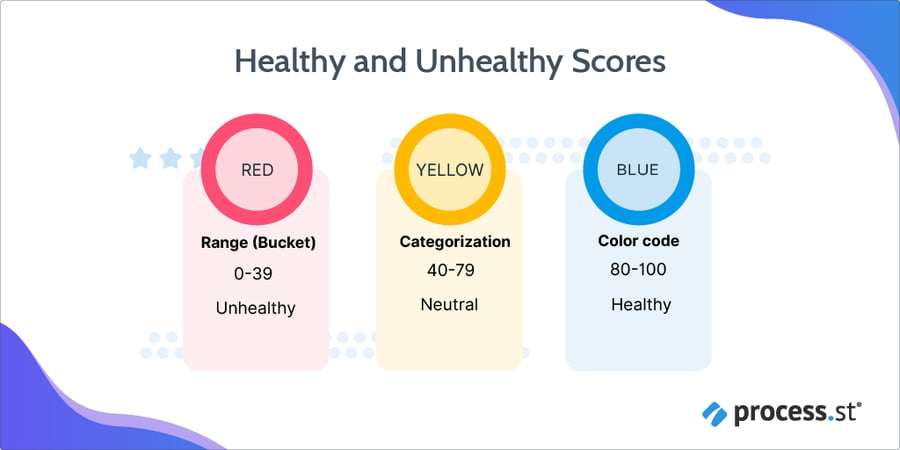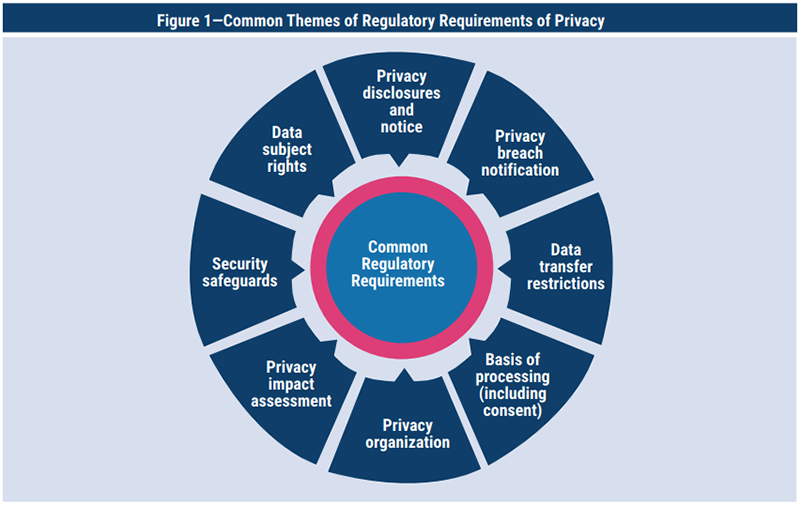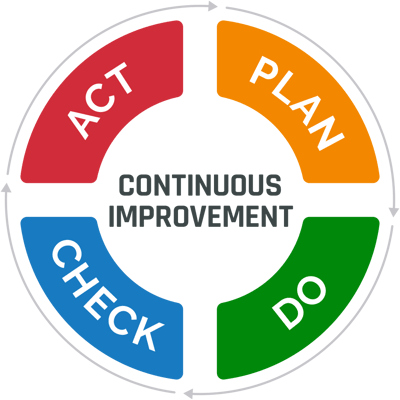
The rapidly growing B2B eCommerce industry invites competition on all fronts.
Keeping your B2B eCommerce ahead in 2024 requires understanding your market and closely monitoring your business health. This can go a long way in reducing churn, increasing customer retention, and giving you a competitive edge.
That’s where SaaS customer health scores can help B2B eCommerce marketers. This score provides insight into whether customers are happy with the product and willing to stay, building a solid foundation for long-term paying customers.
We’ve built this comprehensive checklist to track and optimize your B2B customer health score. Let’s dive in!
1. Establish Clear Health Score Metrics
The first step in monitoring your business’s health score is to define clear health score metrics. This allows you to track and enhance your B2B customer relationships effectively. It requires identifying and quantifying key indicators of customer engagement and satisfaction.
Here’s an example of how a health score matrix can be set up:

Source: Vitally
Doing so helps create a foundation for measuring and improving the overall health of your customer relationships.
There are two key factors to consider when establishing your metrics: criteria definition and segmentation strategy.
Criteria Definition
First, establish clear definitions of the criteria you’ll use to calculate your health scores.
This can include:
- Purchase frequency — the frequency at which each customer purchases.
- Average order value (AOV) — Measures the average amount spent per order.
- Customer feedback — Check for feedback through surveys, reviews, and direct communication.
Segmentation Strategy
A segmentation strategy categorizes your customers into distinct groups based on their behaviors, preferences, and interactions with your brand.
Consider strategies like:
- High-value vs. low-value customers based on how frequently they make large purchases
- Engagement levels of customers based on how regularly they engage with your brand through various channels
2. Implement Robust Data Collection Systems
Without data, you can’t track the metrics you need for your health scoring accurately. For this reason, you should focus on implementing a robust data collection system.
For example, you can collect data from different sources and integrate it into your B2B eCommerce platform.
Here are some key ways to get started:
Identify Data Sources
Start by pinpointing where valuable customer data resides, such as interactions, transactions, and feedback.
This can include:
- Using CRM systems to gain valuable customer interaction history and purchase data
- Accessing web analytics tools like Google Analytics for insights into customers' online behavior
- Monitoring social media interactions to see how customers perceive your brand, engage with your content, and share their experiences
Integrate Your Data
You can gain a holistic view of each customer's journey by merging information from diverse sources such as CRM systems, web analytics, social media interactions, and more.
- Data warehousing can help create a central repository to store information from different sources.
- Leverage APIs for real-time data integration, especially between CRM systems and web analytics tools.
- Perform data cleaning and normalization for data accuracy and consistency across different sources.
3. Set Up Real-Time Monitoring and Alerts
Swiftly identify and respond to customer needs, preferences, and potential issues. Adopt a cohesive approach to monitoring the data and setting up anomaly alerts.
Here’s what comes in handy:
Monitoring Tools
Consider investing in the right tools to grow your eCommerce business, including leveraging specialized monitoring tools and software for customer health tracking.
You will have to:
- Choose comprehensive monitoring tools like HubSpot CRM, which provide features tailored to tracking customer engagement and health.
- Customize your dashboard to highlight key metrics relevant to your business.
Alert System Setup
Set up an alert system by defining the thresholds that trigger notifications. This system lets your team act immediately when a customer's health score indicates a potential issue.
For this, you should:
- Define thresholds for Alerts such as a drop below a certain point or an unusual pattern of behavior.
- Use automated alert systems within your monitoring tools to notify relevant team members via email, SMS, etc.
- Regularly review and adjust alert thresholds to remain relevant.
4. Develop a System for Regular Health Score Analysis
Regularly analyzing customer health scores provides insight into long-term trends, customer lifecycle stages, and the effectiveness of your engagement strategies.

Source: SupportLogic
Such a systematic approach allows continuous improvement of customer relationships and business strategies.
Health score analysis requires you to consider both frequency and methods.
Analysis Frequency
Analysis frequency is all about striking the right balance between staying informed and not getting overwhelmed by data.
Deciding on a monthly or quarterly analysis schedule can provide a regular cadence for taking stock of customer health.
It requires you to:
- Determine analysis frequency depending on your business model, customer base size, and market volatility. Monthly or quarterly analyses are common, but some businesses may benefit from more frequent reviews.
- Calendarize analysis sessions to monitor your health score data in depth.
Analytical Tools and Methods
Leverage the right mix of advanced analytical tools and methodologies to extract actionable insights from your health score data. Dive deep into customer behavior and satisfaction nuances wherein data visualization and analysis platforms like Tableau or Looker can be used.
Here’s what you can do:
- Choose analytical tools to handle complex datasets and provide meaningful insights.
- Adopt analytical methodologies that align with your business goals, such as cohort analysis, trend analysis, or predictive modeling.
5. Incorporate Predictive Analytics
Blending predictive analytics with your health score strategy transforms the approach from merely reacting to customer needs to proactively anticipating them.

Source: Predictive Analytics Today
This proactive approach uses current data to forecast future behaviors, helping you act preemptively to nurture customer relationships and maximize lifetime value.
Here’s what you can do:
Use Predictive Modeling Techniques
Implement machine learning algorithms and predictive modeling techniques to use historical data and predict future outcomes.
These models help forecast potential churn, identify upsell opportunities, and evaluate customer satisfaction levels in the following manner:
- Regression Analysis: Predicting a customer’s future value or likelihood of churn based on their current health score metrics.
- Machine Learning Algorithms: Identifying patterns or segments within your customer base that are at either risk or are likely more profitable.
- Time-Series Analysis: Predicting how a customer's health score might change based on historical trends.
Technology and Tools
The technology and tools for predictive analytics range from sophisticated software platforms to specific programming languages designed for data analysis.
Consider using:
- Platforms like SAS, SPSS, and R to conduct predictive analytics with built-in models and algorithms.
- Python and R libraries for their extensive libraries of statistical analysis and machine learning capabilities like Pandas, Scikit-learn (Python), and Caret (R).
- AWS Machine Learning, Azure Machine Learning, and Google Cloud AI for accessible predictive analytics tools to benefit from cloud computing power.
6. Utilize Health Scores in Customer Service
Leverage health scores in customer service to transform how your business interacts with users. One way is to color-code segments of customers based on their health scores.

Source: Process Street
Health scores help tailor interactions to enhance customer satisfaction and loyalty to drive positive business outcomes.
Here’s how it’s done.
Service Customization
Customize services based on health scores by adjusting the level, tone, and content of customer service interactions.
Consider the following:
- Offer segmented services to provide unique service levels or response times based on health score segmentation. For example, providing priority support to high-value customers or those at risk of churn.
- Adopt personalized communication strategies to address customers' concerns or interests based on their health score indicators.
Training Customer Service Team
Help customer service teams understand how to use health scores effectively.
You should provide:
- Comprehensive training programs to explain health scores, how they are calculated, and their significance in customer relationships
- Role-specific insights on using health scores in daily interactions to make informed decisions for customer satisfaction
7. Ensure Data Privacy and Compliance
Manage customer data by complying with global privacy laws to drive trust and boost brand reputation.
For starters, the following diagram is an example of what should constitute your data compliance privacy policy.

Source: ISACA
Adopting such an approach ensures secured handling of customer data and abides by the following:
Data Privacy Laws
Comply with data privacy regulations such as the GDPR (General Data Protection Regulation) in the EU and the CCPA (California Consumer Privacy Act).
These are the few actions to take here:
- Keep up-to-date with data privacy laws that apply to your business and the regions where your business operates.
- Incorporate data protection principles into your data handling practices.
- Integrating privacy into your system designs from the outset ensures that customer data is protected through encryption, access controls, and other eCommerce security measures.
Secure Data Practices
Adopt secured data practices to protect customer information from breaches and unauthorized access.
Key best practices include:
- Regular security audits to identify and rectify potential vulnerabilities
- Employee training to educate your employees about data privacy and security
- Data access controls to limit access to customer data to authorized personnel only
8. Develop Feedback Loops with Customers
Ensure continuous customer feedback to adjust your strategies in real time. Also, ensure customer needs and expectations are consistently met based on their feedback.

Source: convas
Here’s what you should consider:
Feedback Collection Methods
Adopt different methods for collecting customer feedback and providing a comprehensive view of customer satisfaction coupled with areas for improvement.
Some methods include:
- Sending surveys and questionnaires via email or after customer service interactions to gain specific insights
- Conducting customer interviews for in-depth feedback on their experiences
- Social media and online reviews to gain unsolicited feedback and broader customer sentiment
Incorporating Feedback into Health Scores
Next, you’ll integrate customer feedback into health scores, ensuring they reflect the latest customer experiences and expectations.
Consider key aspects, such as:
- Adjustment Mechanisms: Develop a system for adjusting health scores based on feedback, such as increasing scores for positive feedback or addressing areas highlighted by negative feedback.
- Feedback Analysis: Analyze feedback for recurring themes or issues and use these insights to inform broader business strategies and customer service improvements.
- Closing the Loop: Inform customers about the actions taken based on their feedback. This includes closing the feedback loop and demonstrating your commitment to their satisfaction.
9. Engage in Continuous Improvement and Adaptation
The B2B eCommerce space requires continuous improvement and swift adaptation to changing circumstances. So, effectively leveraging health scores requires an ongoing commitment to refining and updating the system in response to new data, feedback, and market conditions.

Source: Arena
There are two major ways to do this:
Regular Review Process
A structured review process for your health score system ensures it remains relevant and effective.
- Schedule regular reviews of your health score metrics.
- Ensure cross-functional review teams (e.g., sales, customer service, marketing) are involved in the review process to gain diverse insights.
- Make iterative refinements based on review results, which involve updating metrics, refining data collection methods, or tweaking customer engagement strategies.
Adapting to Market Changes
Stay agile and responsive to market changes that help keep your health score system relevant.
For this, you need to do:
- Market Trend Analysis: Regularly analyze market trends and changes in customer behavior, where the results help predict customer expectations and need shifts.
- Flexible Strategy Development: Develop flexible strategies that can be quickly adjusted to respond to market changes. It requires being ready to modify health score metrics or customer engagement approaches as needed.
10. Incorporate Health Scores into Long-Term Strategic Planning
Integrate health scores into your business's broader strategic planning for customer-centricity.
This helps simplify operations as you are stacked with customer health insights, driving sustained growth and competitiveness.
Here’s what you can consider:
Incorporating into Business Strategy
A B2B eCommerce health score checklist for customer retention helps use health scores as a strategic tool.
This requires several key actions:
- Make strategic alignment for your business objectives and strategies based on your health scores.
- Adopt and use health score trends and analytics to make informed decisions about resource allocation, product development, and marketing strategies.
- Consider communicating health scores and their importance to all stakeholders who help shape business strategies.
Future Planning Based on Health Score Trends
Use the health score trends for future planning while anticipating changes.
For this, use:
- Predictive Forecasting: Forecast future customer behavior, market opportunities, and potential challenges, which feeds long-term business planning and investment decisions.
- Scenario Planning: Designing scenarios to prepare for various market conditions and customer shifts.
- Innovation-Driven by Customer Insights: Leverage health score trends to inspire innovation in product development, service offerings, and customer engagement strategies.
Wrapping Up
Implementing a customer health score system in B2B eCommerce is a comprehensive process. The journey towards leveraging health scores is iterative, demanding regular reviews and adjustments in response to customer feedback and market changes.
Ultimately, integrating the checklist above can help navigate the long-term strategic complexities of the B2B eCommerce landscape. Consistently following this strategy will help foster sustained growth and drive customer loyalty.





Leave a reply or comment below